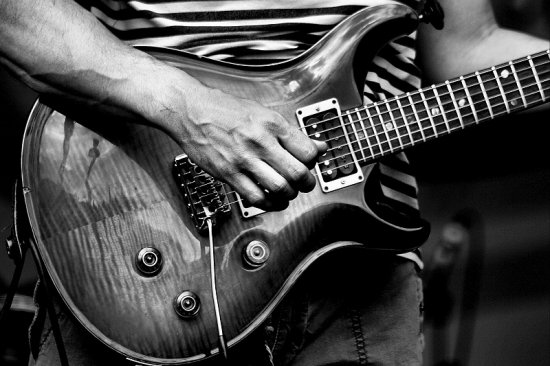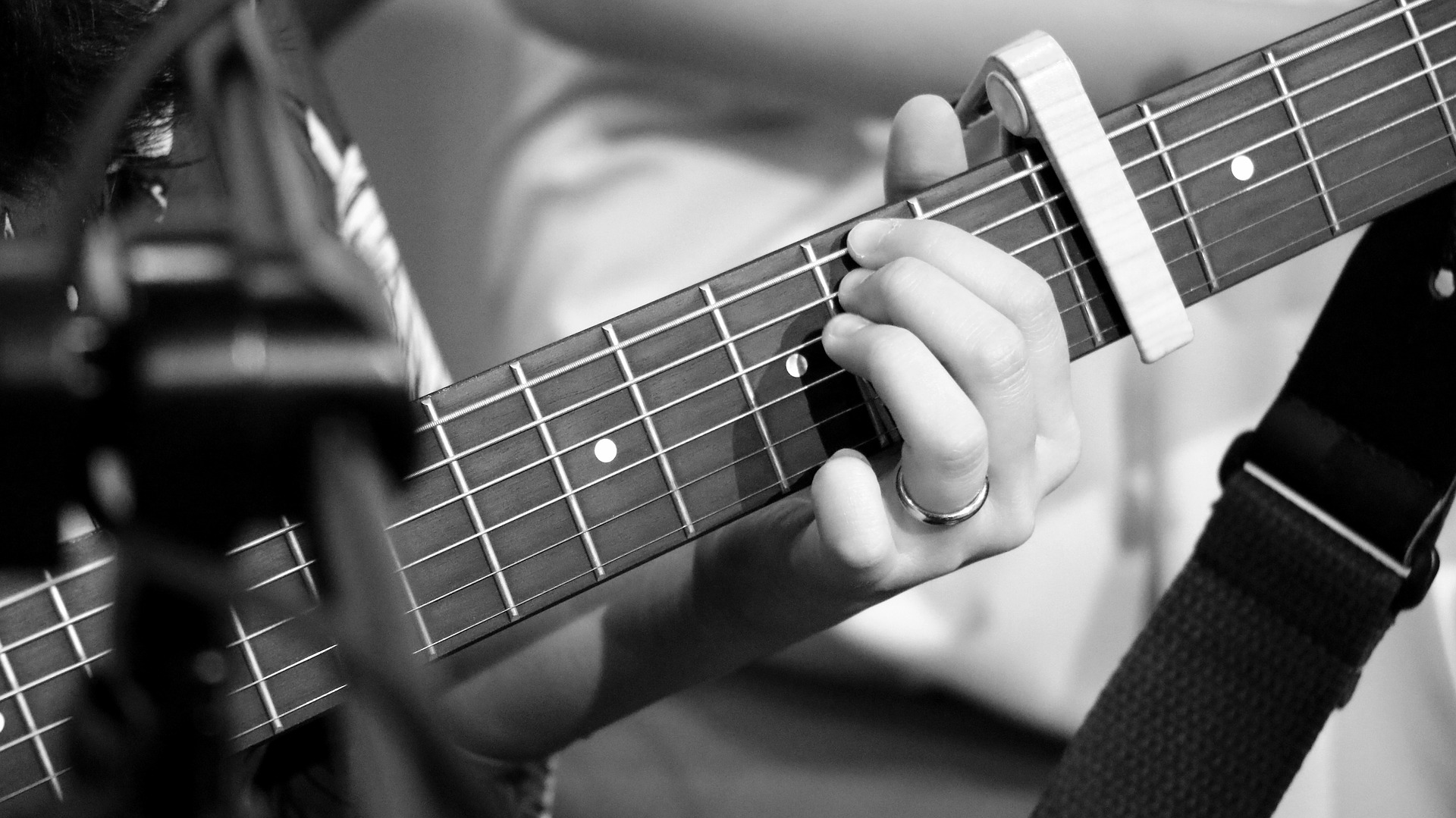I was going to call this lesson something like, ‘the 28 most important guitar chords to know’, because knowing the following 28 diatonic chord extensions will have you covered in most comping situations; in fact, this is the kind of thing I wish I’d known before going to music college.
The 28 chords we’re going to cover here then are diatonic chord extensions, or 9th, 11th, and 13thchords. They’re also the same in every key, so you only need to learn them once and due to the transposing nature of stringed instruments, you’re covered in all 12 keys.
I’m not a huge fan of big clunky chords, so I’ve stripped these chords down to their bare bones, which is the perfect approach for subtle rhythm parts where you’re not getting in the way of any other instruments, as well as making for chords that are easy to remember and form on the fly.
Let’s stick to the key of G Major and first up we have the Gmaj7, Gmaj9, Gmaj11, and Gmaj13 diatonic chord extensions. The notes in dark blue are the ones we’re adding to form the next chord.
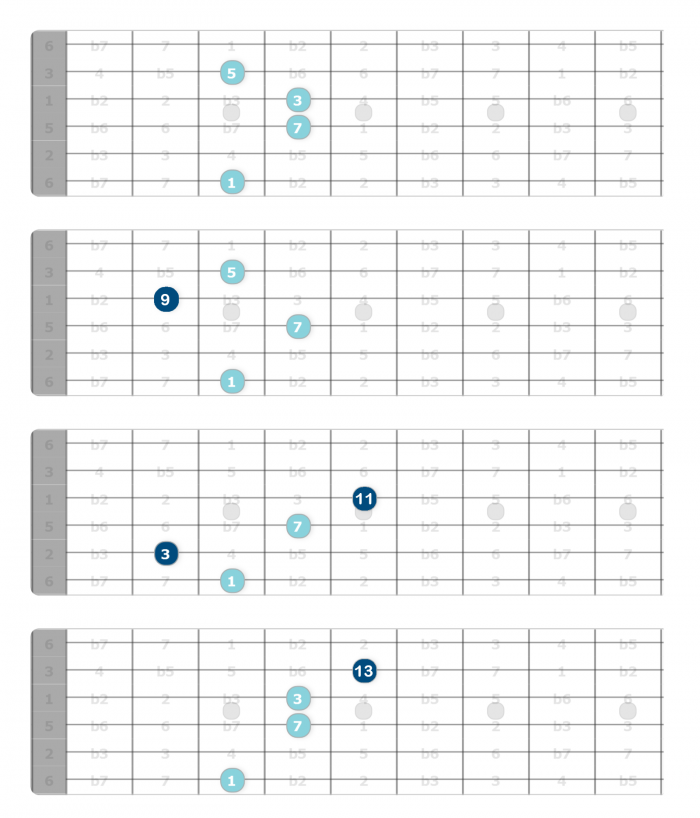
Next up is Am7, Am9, Am11, Am13.
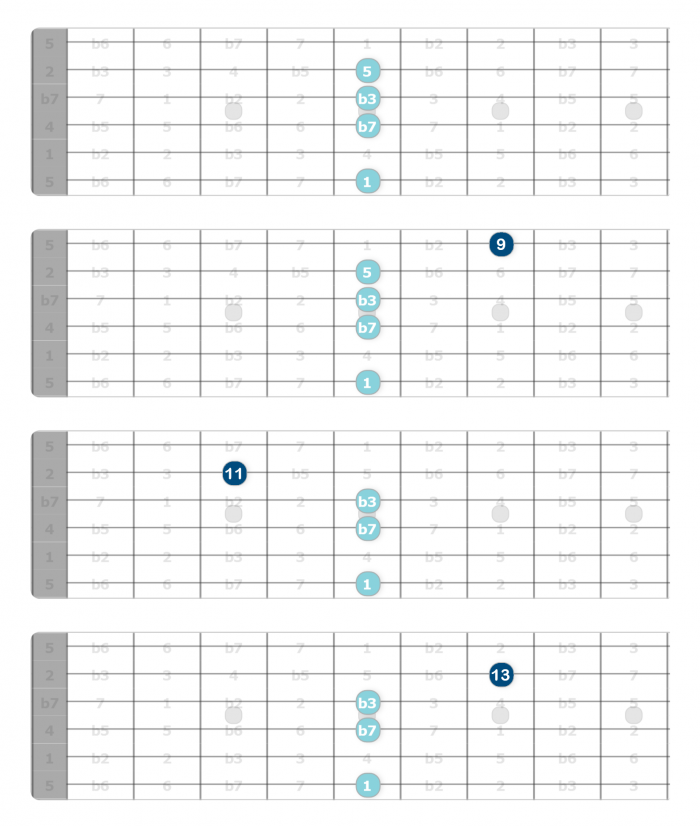
Our next diatonic chord extensions are Bm7, Bm7b9, Bm11, Bm7b13.
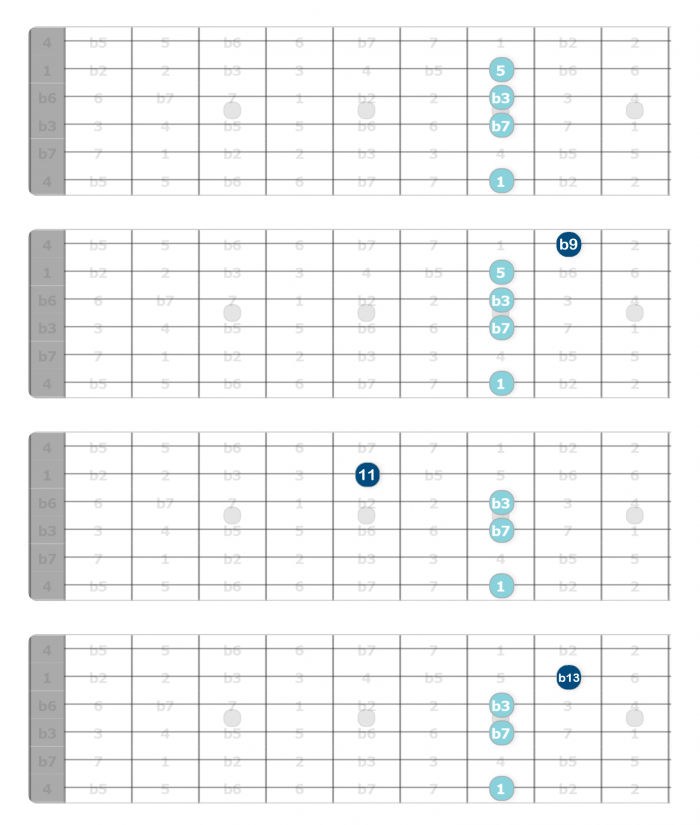
Next up we have Cmaj7, Cmaj9, Cmaj7#11, Cmaj13.
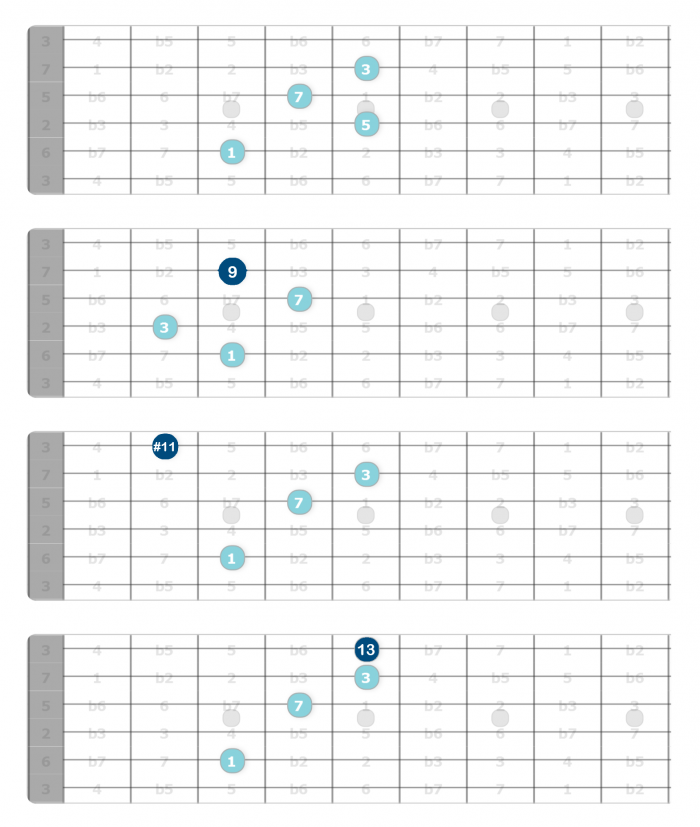
Next we have our dominant chords for the key: D7, D9, D11, and D13.
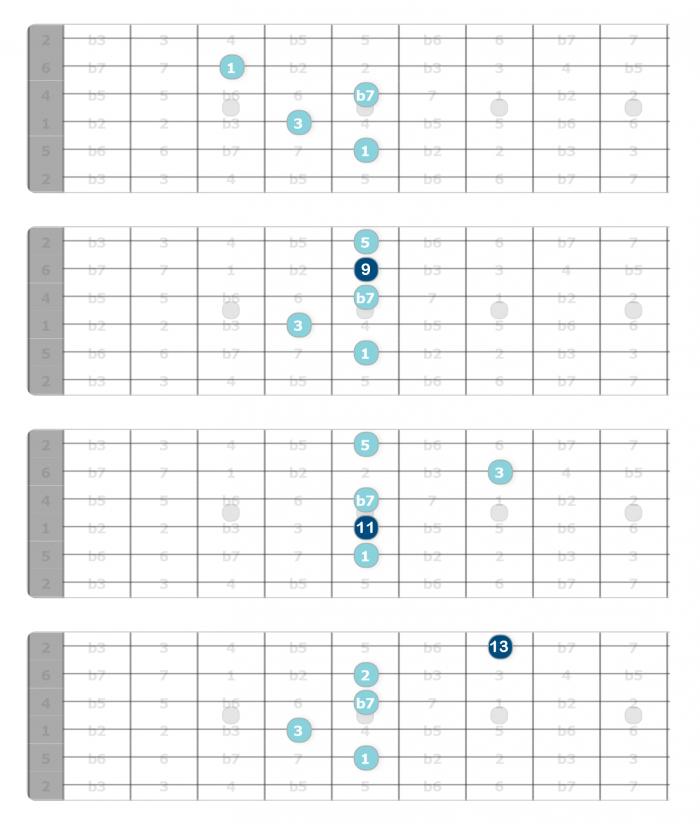
Our next chords are Em7, Em9, Em11, and Em13.
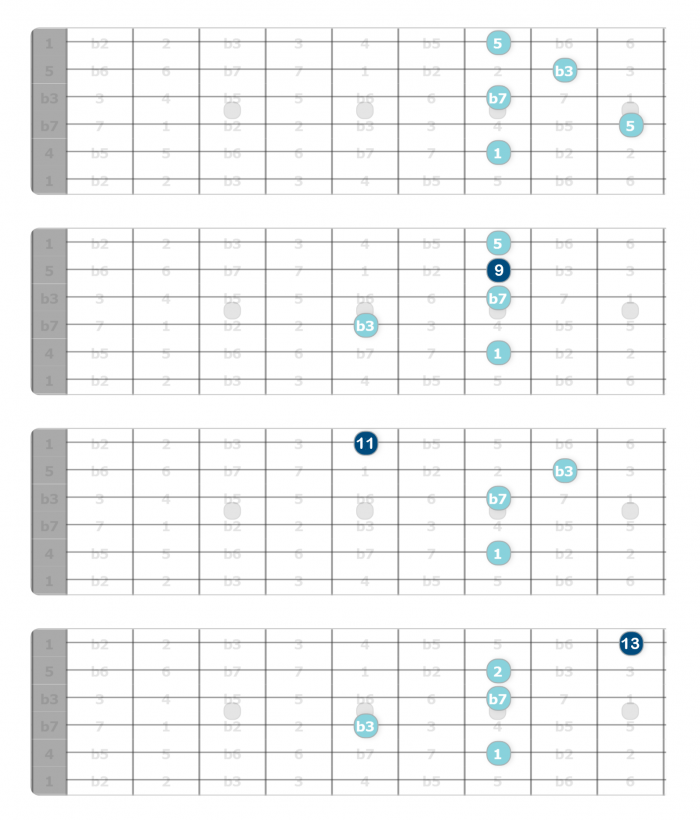
And finally, we have the following chords: F#m7b5, F#m7b5b9, F#m11b5, F#m13b5.
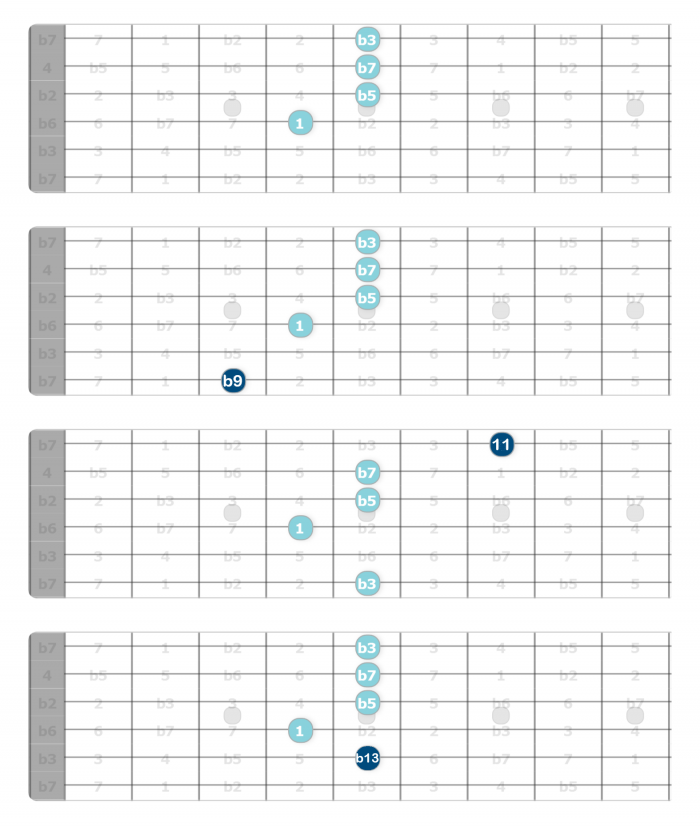
Remember, all these diatonic chord extensions are movable and are well worth learning if your goal is to become a versatile, well-rounded player.

